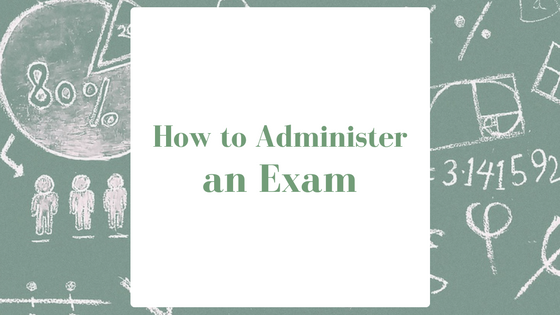
While the bulk of students’ success on examinations will come in your preparation before test day, creating a good setting for examinations can help students achieve better scores. As a professor, you should arrive early and have the test materials ready for distribution when the class arrives. If you have time, check the lighting and temperature of the room to ensure a comfortable setting.
When the class has all assembled, review the procedures of the exam and be sure to ask if anyone has questions about the test procedures. Then, students should clear their desks of personal items except materials needed to complete the examination. If you encountered errors when reviewing the test materials, note it orally and in written form on the board if possible. Remind students of the allocated time for the exam, and don’t forget to wish them good luck!
Even if you brought personal work to complete while students take the examination, remember your first priority – making sure students are succeeding on the test. Don’t lose sight of the classroom, and be sure to look up frequently to monitor students’ reactions and to respond quickly to raised hands. In addition, circulate throughout the room to remind students that you are present and watching, which can deter students from committing academic dishonesty. Finally, if a clock is not readily available in room, write the time remaining in the exam frequently on the board to help students pace themselves.
If you follow these quick tips to administering an exam, students should feel comfortable, relaxed, and able to focus on the content material. Your presence and attentiveness as a professor during examinations can help maximize student achievement and improve student outcomes.

